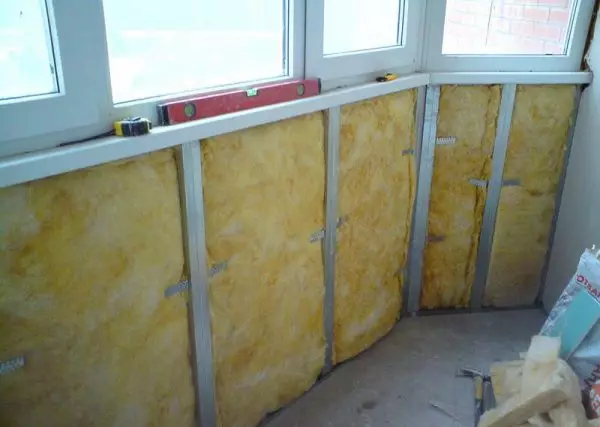
Those owners of apartments, whose possessions include a spacious balcony or loggia, can assume that they are very lucky! After all, this is a considerable reserve of the useful area of housing, and the main thing is to dispose of them correctly. Two approaches are practiced - this is the union of the balcony (or loggia) with the living room, or the transformation of it into a separate insulated and even, if desired, heated premises. The first path is very difficult, and far from always possible. The second one can try to realize almost any owner of the apartment, if, of course, his balcony is worth it.
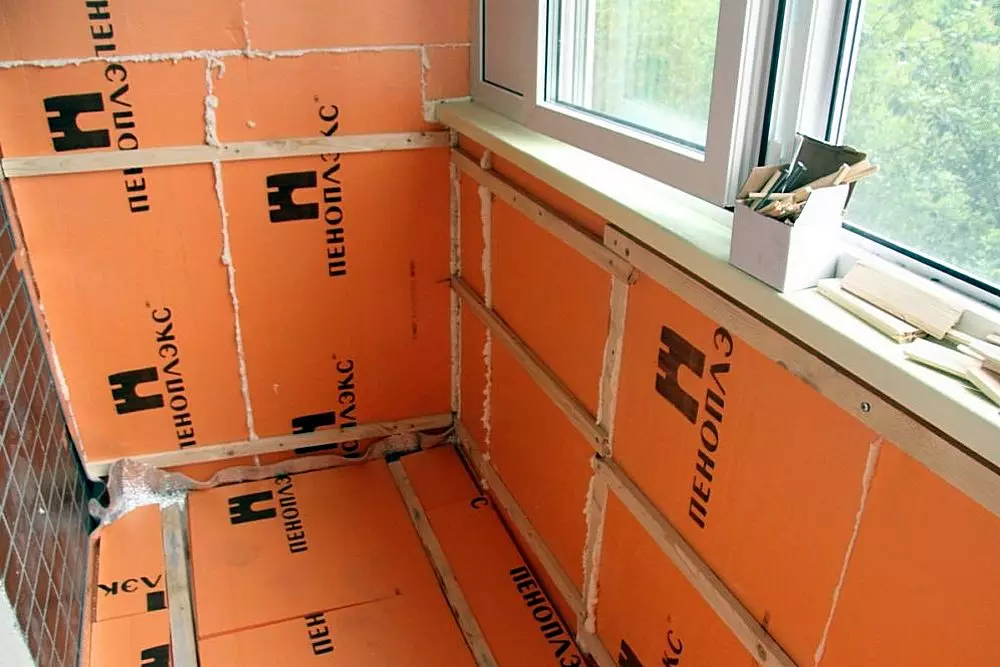
The main condition becomes the mandatory high-quality glazing of the balcony, the construction of the enclosing walls, since sometimes there is simply lattice parapet in their place. Well, the second most important requirement if we want to turn the balcony in a full room - you need to correctly calculate insulation! So this issue is to calculate the thickness of thermal insulation, and dedicate today's publication. How usually the balcony features of insulation balconyovna, first, much depends on the type of balcony (loggia) and its condition at the time of the decision on insulation. Often, it is often necessary to start with a major overhaul - especially it is often necessary to balconies of old four or five-storey houses, which used to be exclusively welded with a welded parapet.

Secondly, there are a lot of structures of balconies and loggias. And not all of them are insulated according to a single scheme, as the enclosing structures (walls, floor ceiling) may adjourn, for example, with the street, with an open balcony (count - with the same street), with a warmed room (the neighbor brought his balcony in order before ) Or even with disappear. All this affects the choice of insulation, and the necessary thickness of thermal insulation. For example, take a look at the illustration below:
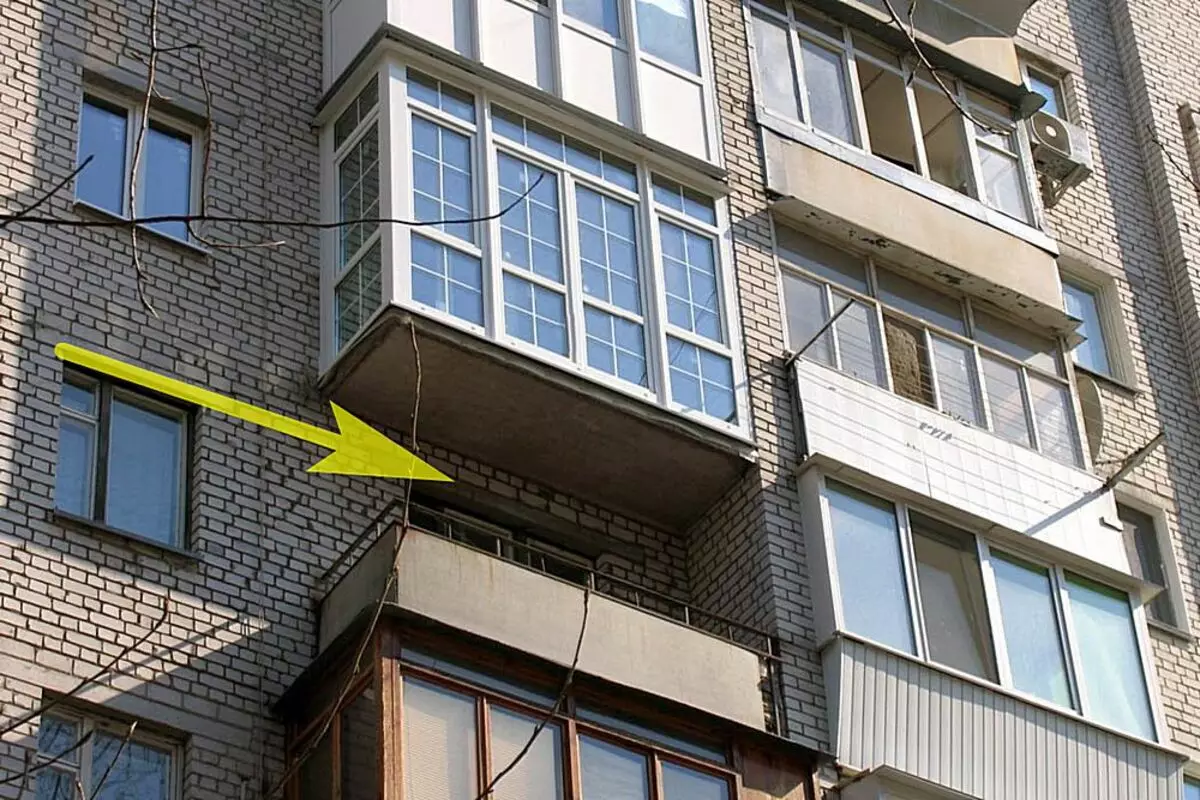
Let's say the owner decided to insulate the balcony specified by the arrow. On top and bottom are balconies with glazing, but they can be insulated and even heated, or remain cold. Similarly, the neighborhood on the right, through the wall. All these nuances are desirable to clarify, talking to neighbors. It should be assumed that they will only become planned insulation, the fact that the powerful bridge of the cold will turn around and for their balconies. Sleva and from the facade side - a lattice parapet, instead of which the wall can be built from light blocks. But sometimes leave and so, simply providing for a frame system for fastening the external and interior decoration and insulation between them.
How to warm the balcony: what material is better and the calculation of the thickness of the insulation Evgeny AfanasyevExpert's opinion: Afanasyev E.V. Head editor of the Stroyday.ru project. The question of the expertise between the balcony (loggia) and the living room, as a rule, is not insuading - it's just separated in a common style. Why are we insulating? What insulation seems optimal? Naturally, what shows the highest heat insulating parameters. In other words, it has a minimum coefficient of thermal conductivity. The territory of the balcony or loggia is traditionally not too spacious, and diluating it overly thick layers of the insulation - unjustified. The PIR-plates are considered an effective insulation today. They actually show record indicators of heat transfer resistance, but their use is still limited due to too high cost. Although such plates appeared in the assortment series of some manufacturers precisely for the insulation of the balconies!

High thermal insulation indicators dismant over sprayed polyurethane foam. This insulation simultaneously becomes an insurmountable obstacle for moisture, and the layer monolithism leaves no cold bridges. Excellent, but also a very expensive solution: you need to attract masters with special equipment. Kits and for self-applying PPC are offered, but their cost is shielded by most of the owners of the apartments.

Polystyrene plates are most often used - they have quite decent heat engineering indicators, and in terms of cost they can be classified as available. Of course, it is better to acquire XPS (EPPS), bright (almost literally the word!) An example of which is the famous Penopelex. White foam is cheaper, but, frankly speaking, it is at all hindrance to his apartment - too much "negative moloss" is stretched behind it, and mostly - justified negative.
Polystone plates are equally good for walls, and for ceiling, and for floor on the balcony. Evgeny AfanasyevBut the mineral wool, although almost comparable on thermal insulation qualities with expanded polystyrene, is not always welcome on the balcony. For the insulation of the "virtual" frame parapet - yes, this is a good solution, subject to external protection against wind and blotting. But for the insulation of capital walls, gender or ceiling - it is better to search for another option. The fact is that, one way or another, it is necessary to apply the principle of internal insulation, in which the dew point is shifted as close as possible towards the room. That is, the condensation of a pair (without which in the residential premises - in no way) will occur in the insulation itself or on a warmed surface. There will be nowhere to go to the water, this is a mold in the future, and the Moisturization of Minvati is another sharp decline in its insulation qualities.
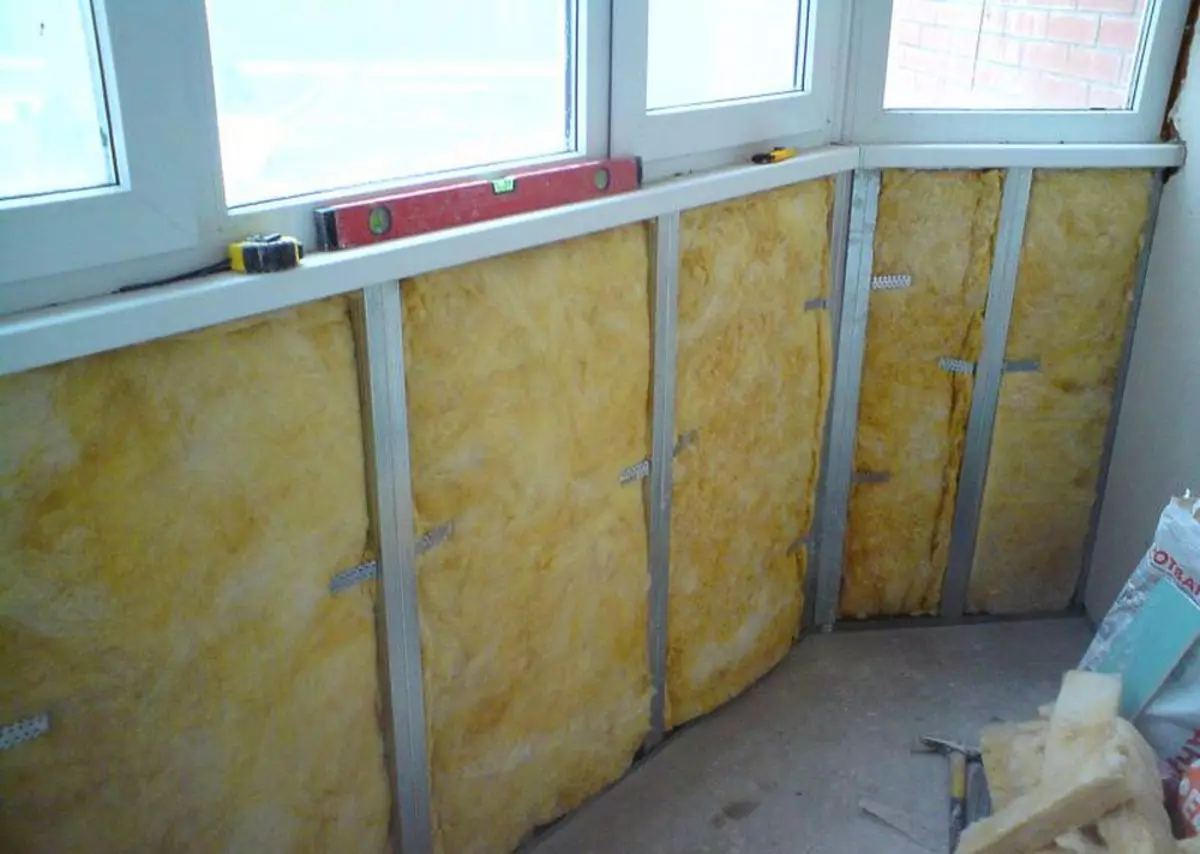
So, in the frame parapet, the Minvati - without questions, if you create a pair-protective barrier on the side of the balcony, and outside the possibility of venting. In other cases, it is extremely undesirable. Finally, another insulation, which, otherwise, is usually not used separately, but it is very widely used in the complex with others. This refers to the beam of foamed polyethylene, and it is desirable - with a reflective foil surface on one side. For example, the well-known foam. Its thickness can be from 2 to 10 mm.
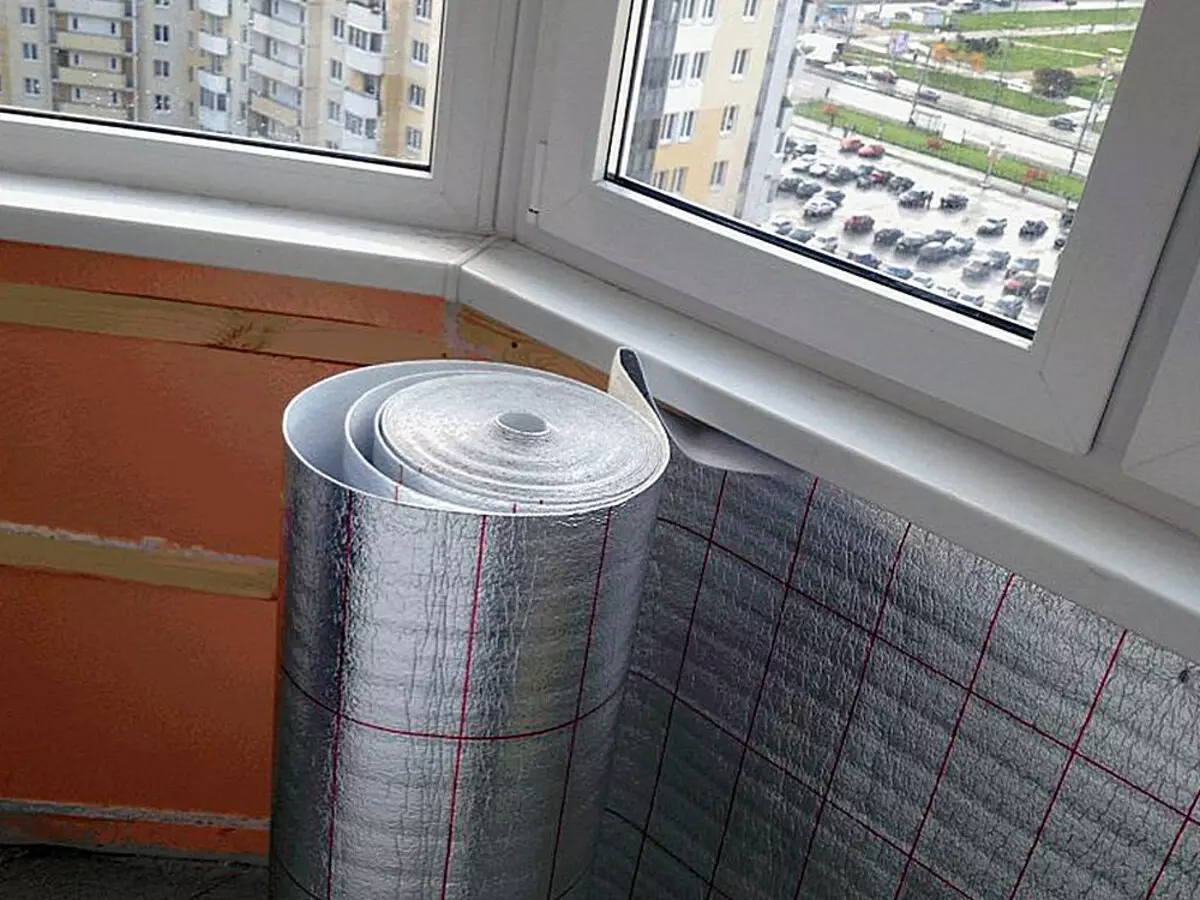
The use of such a material gives a triple effect immediately: the foamed polyethylene itself is a very good insulation comparable to thermal conductivity coefficient with polyurethane foam or EPPS. So there are a few extra millimeters of thickness - this is a completely significant additive into a common "insulation ensemble". The folegated side gives a reflective effect - redirects infrared rays carrying heat in the direction of the room, thereby reducing the heat loss. Whoever believes - remember the "thermos effect" with a mirror flask ... and the polyethylene himself, and the reflective layer - moistureproof. That is, the most necessary layer of vapor barrier is created by the room. The likelihood of the appearance of "wet zones" inside insulating construction is reduced.
How to warm the balcony: what material is better and the calculation of the thickness of the insulation Evgeny AfanasyevExpert's opinion: Afanasyev E.V. Head-owned editor of the project Stroyday.ru.ingerer. The insulation of the insulation will not be considered a question - in their peculiarities, they do not fit little to use on the balcony, in conditions of extremely limited space. How is the insulation thickness? The principle is not hindered. Most construction enclosing structures in the end have a structure consisting of several layers, each of its material. The simplest examples: wall = brickwork + layer of internal or outer insulation + layer (one or more) finishes. Or, the floor = overlapping + layer of insulation + layer of plywood + the finish coating of the flooring can be very much. So, for those structures that in contact with the street, it is important that their total heat transfer resistance is not lower than the normalized, established for this construction region. The total folds of the resistances of each of the layers - for this there is a special formula .rt = h / λrt - the heat transfer resistance of the separate layer; H is the thickness of this layer; λ is the thermal conductivity coefficient of the material from which this layer is made (table value) means specifically In the insulation, due to its increased thermal insulation abilities, it is possible to pull the overall resistance rate to a normalized value, having calculated its thickness for this. It will only find out where to take this normalized value?
How to warm the balcony: what material is better and the calculation of the thickness of the insulation Evgeny AfanasyevExpert's opinion: Afanasyev E.V. Head editor of the project Stroyday.ru.ingerer. The question of the expertise is simply to find it in SNiP, clarify in a local architectural or construction organization (they know for sure), or to use the map of the scheme proposed below. Its accuracy will be quite enough.
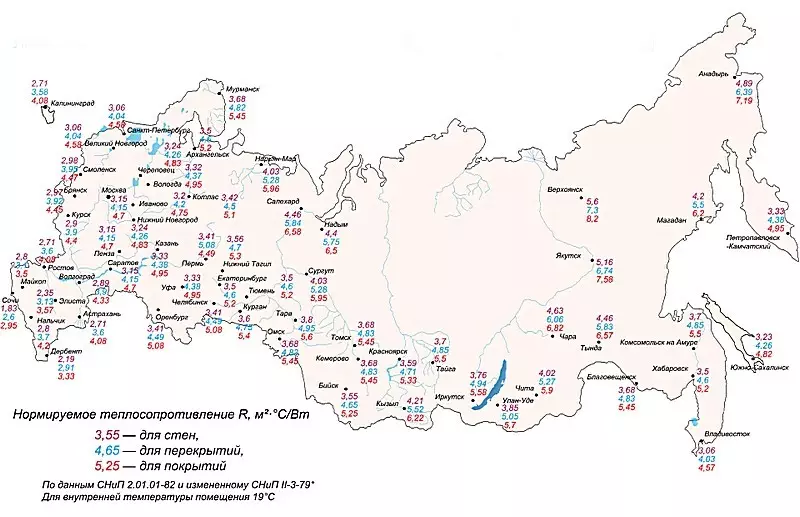
ATTENTION: For walls, overlappings and coatings, the thermal resistance value varies. For this on the map they are listed different color. Now, when the general picture with the insulation of the balcony should become clear - you can go directly to the calculations. Not manually, of course - for this we have a special calculator. Calculator calculating the thickness of insulation of balcony to calculate the calculation of the calculation of the calculation - for each individual section of the balcony insulation, it is calculated, taking into account the characteristics of a particular design and with the possibility, if necessary, change the thermal insulation material on More convenient or more efficient. In any case, it should be quite clearly represented, how planned to perform the conceived. The main insulation is indicated - indicated in the proposed list. There, by the way, Equata and Ceramzit appear, but rather - "just in case." In reality, the balcony is not exactly the place where they can show ourselves. The thermal conductivity of insulation (equal to other materials, which will come across the calculation) are already listed in the calculator database. It is necessary to specify which part of the balcony is calculated. According to the map, the scheme is determined, and then entered into the calculator, the value of the normalized heat transfer resistance. There is text and color tips to not be mistaken with the choice. The next block of fields is the parameters of the warmed design (for example, walls or overlaps). First of all, this is what it is neighboring or where it comes out (selected from the proposed options). And then it is its thickness in millimeters (indicated on the slider) and the material of the manufacture (selected from the list).
How to warm the balcony: what material is better and the calculation of the thickness of the insulation Evgeny AfanasyevExpert's opinion: Afanasyev E.V. Head editor of the project Stroyday.ru.ingerer. For the issue of the Nuance expense question. Sometimes there is no design. One example is a frame instead of a capital parapet, outside by siding, from the inside, say, plywood or natural lining. Or above the balcony of the top floor there is no roof - it is also done on the frame principle and is insulating. In such cases, the thickness of the insulated design is simply shown to be zero. The following item is given a question, whether an additional thin layer of foil insulation will be used. If so, (strongly recommended! Check out the calculations!), It will also be necessary to specify the thickness of this material. The next item, to be honest, can be considered an optional bonus. Let's try to clarify ... It has already been said that in the overall design there may be other layers as technological (for amplification, for alignment, to create a rigid base, etc.) and purely decorative, finishing destination. On the balcony, in the conditions of "chronic deficiency of space", these layers can not be thick a priori. Will their contribution to the overall picture of insulation? - Most often, not very. And it will not be a big mistake to simply ignore them during the calculations - everything will only get a small reserve of thermal insulation thickness. But for accuracy lovers, and these opportunities. Especially since, for example, a natural plug is used for decoration, even 10 mm can significantly increase the thermal insulation abilities of the design. The computation will be displayed in millimeters. This is the minimum required thickness of the selected insulation. From it just originated when choosing the optimal version from the range of standard thicknesses. And all the wisdom. Determined, for example, with insulation for walls - go to the floor and ceiling. All calculations you will climb literally a few minutes.
